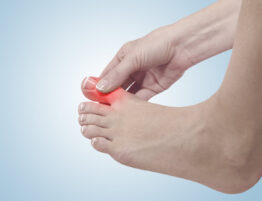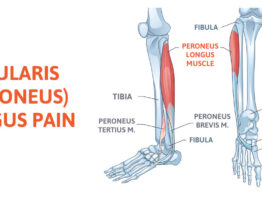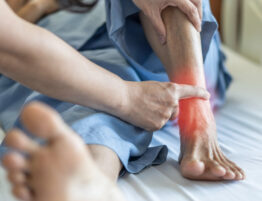
Walking is an essential function in your daily life. So, if you experience pain in your toe, especially when you walk, it can be extremely frustrating and debilitating. What’s worse, the pain is often exacerbated with certain footwear, such as flip flops, so now you struggle walking and are limited in what shoes you can wear. Luckily, there are options.
Hallux limitus is an arthritic condition that limits the motion and function of the big toe joint. Hallux limitus is similar to a bunion. It is often painful, and can make it difficult to walk. Some symptoms to look for with hallux limitus are:
- A grinding or grating of the big-toe joint when you move it
- A bone spur grown on top of the big toe joint
- Swelling and inflammation
- Deep, aching, chronic pain
- Stiffness and limited motion
- Overall joint tightness
- Difficulty wearing shoes like high heels, flip flops, and other low support shoes
Hallux limitus, like bunions, is progressive! If left untreated the symptoms worsen and turn into hallux rigidus- no motion of the big toe joint
at all. Hallux rigidus is more painful than hallux limitus. The pain can be so severe that it often decreases your activity, makes you afraid to take long walks, and takes away your ability to run altogether.
Also, hallux limitus when left untreated often leads to other foot and ankle problems. When you have such pain in your big toe you often overcompensate to alleviate the pain, which puts extra stress on other parts of your foot and ankle. Now, you not only have pain in your big toe, but your foot and ankle as well.
Hallux limitus is usually caused by two factors: genetics or an injury to the big toe joint. Some people are born with a predisposition to conditions like arthritis or high or low arches, which can all lead to foot problems like hallux limitus later in life. Also, hallux limitus can stem from repetitive movements, or damage to cartilage in the toe.
Again, hallux limitus is progressive, and only gets worse the longer you wait, which is why early treatment is vital! Seeing a podiatrist will reveal the exact stage of your hallux limitus, and then help to determine the most appropriate action to take out of the five common treatments. The treatments include:
- Custom Orthotics– Unlike over-the-counter orthotics, custom orthotics, made by a trained podiatrist, take a mold of your actual foot. They then create orthotics specifically designed to correct your individual foot problems.
- Cortisone Injections- These are injected directly into the joint to reduce swelling and inflammation, however they are only short term solutions that may damage the joint.
- Platelet-Rich Plasma Therapy– This new tissue regeneration therapy can be used as an alternative to surgery that has a fast recovery time.
- AmnioFix Therapy– This new, regenerative medical product containing organic cellular components enhances healing, reduces scar tissue formation, and reduces inflammation.
- Surgery– In the more advanced stages of hallux limitus surgery may be needed.
Of the treatments above, the Platelet-Rich Plasma Therapy and AmnioFix therapy have shown to be the most successful in early treatments. When used before hallux limitus progresses too far they can even prevent the need for surgery all together. Come visit your podiatrist in Fort Collins or Broomfield for further consultation.










Write a comment: